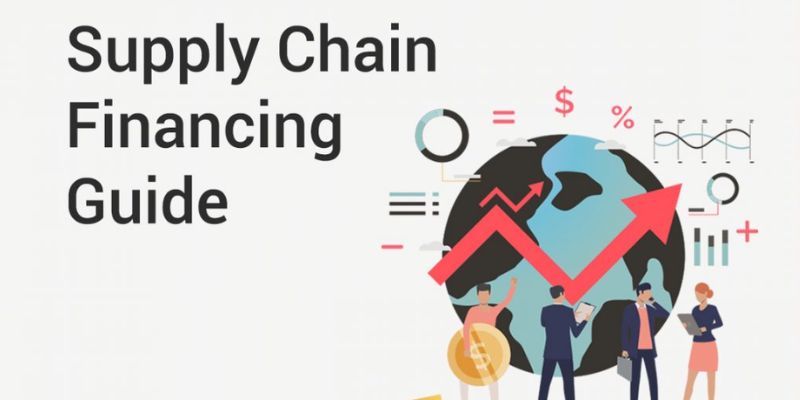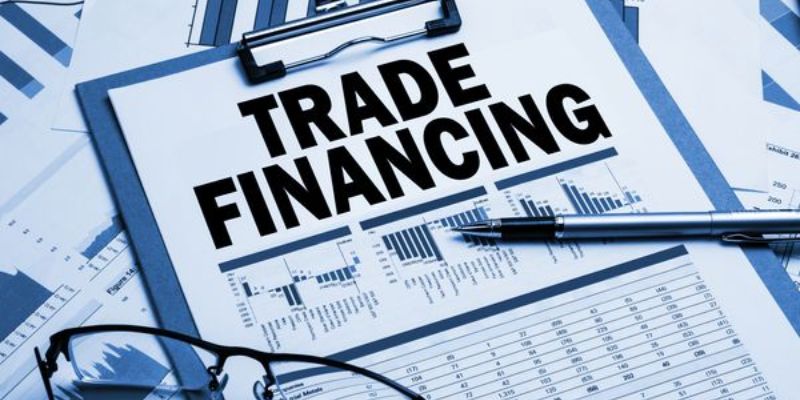Trade finance and supply chain applications are about to change, and I’m here to show you how. Gone are the days of endless paperwork and confusing processes. I’ve been there, and I know you need a system that keeps pace with the rapid speed of global business. Think quick, efficient, and dependable—that’s where cutting-edge apps step in to revolutionize how we handle trade finance. Adjust your sails, because we’re diving into a world where modern apps not only simplify transactions but also provide ironclad security. From small businesses to large enterprises, everyone stands to gain from this tech wave. Ready to transform your supply chain management? Let’s unlock the full potential of modern trade finance together.
Understanding the Basics of Trade Finance in the Supply Chain
The Role and Mechanisms of Trade Credit Solutions
In the trading world, we all want goods to move smoothly. That’s where trade credit solutions come in. They let buyers get goods now and pay later. This eases cash flow for buyers and keeps sales ticking for sellers. But how? Sellers offer a credit period, say 30, 60, or 90 days. During this time, the buyer can sell the goods before paying the seller. It’s like having a bridge that connects two cliffs, with the goods on one side and payment on the other.
Trade credit can look different based on your needs. For example, companies might use invoice financing to get cash fast. They sell their unpaid invoices at a discount. This gives them quick money to keep running their business.
Exploring Export and Import Financing Options
Money makes the world go round, especially in trade. Export and import financing help businesses trade across borders. Importers can get bank guarantees for their sellers. This reassures sellers that they will get paid. Exporters use export credit agencies to safeguard their sales overseas.
There are lots of tools for financing in trade. Like letters of credit, which are promises from banks that payment will happen if the goods are as promised. There’s also purchase order financing. This helps when a seller gets a big order but needs money to make the goods first.
We can’t ignore risks in trade finance either. People and businesses need to make deals without worry. Banks and agencies help by checking documents and enforcing rules. This keeps everyone honest and trade moving.
Trade finance isn’t just about moving goods or paperwork. It’s about trust, enabling businesses to grow and buyers to get what they need when they need it. With these finance tools, companies can sail smoothly over the sea of global trade, delivering goods around the world while managing the risks and keeping their cash flow in check.
Advancing Trade with Modern Financial Instruments
Leveraging Letters of Credit and Bank Guarates
In trade, trust means everything. This is where letters of credit come in. They help sellers trust that they’ll get paid. Banks issue them as a promise to pay the seller on behalf of the buyer. As long as the seller meets all the terms, they get their money. It’s a secure way to do business, especially in foreign lands.
Letters of credit are like a safety net for both sides in a trade deal. Think of them like a friend who says, “I’ve got your back,” when doing a big deal.
Now, let’s talk about bank guarantees in international trade. These are key for big deals too. They make sure that if the buyer can’t pay up, the bank will cover it. This promise helps businesses grow, reach new markets, and take on bigger deals without fear.
The role of bank guarantees is important for smooth trading. They are a sign of good faith that the deal will go as planned.
Streamlining Processes with Documentary Collections and Purchase Order Financing
When we move goods around the world, paperwork can be a headache. Documentary collections make this easier. With these, banks handle documents that prove shipment. They make sure that everything is in order before payment goes through. This method speeds up the process and cuts red tape.
Purchase order financing is another hero in trade. It helps sellers who don’t have enough cash to fill big orders. A financing company pays the supplier right away. Then, when the buyer pays for the goods, the financier takes a fee and gives the rest to the seller.
It’s like a bridge over cash flow gaps for sellers waiting on big checks. They can keep sales up and shipping out without money hassles.
Both these tools smooth out bumps in the trading journey. They keep goods, documents, and money moving fast. This helps businesses keep their promises and build strong trade relationships.
Trade credit solutions, letters of credit, and bank guarantees form a shield, guarding against risks in trade. By understanding these tools, companies shield their cash and build a solid ground for growth.
Remember, in trade finance, it’s all about keeping a balance between risk and reward. Modern financial instruments taught right here tip the scales towards success. They give businesses the power to strike deals with confidence, anywhere in the world. So, dive in, use these tools, and watch your trade go the distance.
Technology Integration in Trade Finance
The Emergence of Blockchain Solutions for Enhanced Security
When we talk about safe trade, blockchain is a game changer. It’s like a digital ledger that cannot break or lie. Think of it as a book where you write down trades. Once written, no one can wipe it out or change it. This makes dishonest acts in trade very hard to pull off.
Blockchain builds trust between people who trade across borders. With blockchain, everyone knows the deal is clear and safe. Trade credit solutions, letters of credit, and bank guarantees in international trade—all of these benefit. They become more secure and faster to process.
Blockchain also helps with laws and rules in trade. It can store data safe and share it with folks who check if everything is fair and by the book. This means fewer problems and delays when trading across the world. For businesses both big and small, this is big news. It means they can trust their deals will flow smooth, and they get to save time and money.
Utilizing Trade Finance Software and Platforms for Efficiency
Now let’s look at trade finance software. This tech is all about making things quick and easy. It’s like having a smart assistant for your trade needs. These platforms can handle a lot of jobs at once. They can manage trade credit solutions, invoice financing, and more, in one place.
Using trade finance software, you can track where your money or goods are at any time. You get to see everything move step by step. It’s very handy, especially for supply chain funding and inventory finance. We can say goodbye to lots of papers and hello to smooth trade.
Trade finance platforms are also smart with money. They check cash flow and help in cash flow management in trade. This means businesses don’t run out of money when they need it most.
For folks who send goods, finance in the procurement process is also better. These platforms can sort out things like purchase order financing. This way, suppliers get their working capital faster.
And there’s more. These tools help in finding the best ways for shipping and logistics financing. They ensure goods get where they need to go. They also help with trade insurance services. This gives peace of mind that goods are safe while they travel.
So, what’s important to take from this? Well, blockchain and trade finance software make trading safe and smooth. They help goods and money move across the world like never before. This is making trade work better for everyone, everywhere. It’s truly exciting times for global trade, all thanks to these smart, new tools.
Overcoming Barriers and Embracing Trends in Global Trade
Risk Mitigation Strategies and Regulatory Compliance
Risk is a big player in trade. We dodge it with things like letters of credit. They make sure sellers get paid and buyers get goods. Bank guarantees also help. They promise payment to sellers if things go south.
You asked about risk in trade finance? We use tools like letters of credit to lower it. They’re a promise from a buyer’s bank to the seller’s bank. If the buyer can’t pay, the bank will. Bank guarantees are similar, and they protect sellers from losing out.
Now what about laws and rules? They’re like the recipe for a cake. Follow them and you bake a sweet trade deal. Mess up and it all falls apart. Supply chain finance platforms help us stay on track. They match the rules and make trading smoother.
Trade finance regs? They’re the do’s and don’ts we follow. Platforms keep us in line with the latest rules.
Forecasting Trade Finance Trends and Their Economic Impact
Peeking into the future of trade helps us big time. Trade finance trends? They’re like the wind. Catch them and sail ahead in business. New trends mean using smarter tools, like blockchain. It locks in data tight and keeps trade clean from fraud.
Forecasting trends is guessing what comes next. It shapes how we trade and grow our money. Blockchain’s role here? It’s huge! It makes sure every step in a trade is clear and safe.
The economic impact? Think of it as a ripple in a pond. Good trade finance makes waves that help everyone. More jobs, better products, and extra cash for all. We aim for steady growth and not a splash that fades fast.
Spotting these trends means we’re ready for what’s next. We get our trade muscles in shape, keen and set to flex. Working capital for suppliers is key to this. It helps them keep up with orders and not miss a beat.
Economic impact in simple terms? It’s how trade finance makes our lives better. It creates jobs and gives us cool stuff to buy. Working capital gives suppliers the power to say ‘yes’ to big orders.
So we’re tackling trade barriers with our eyes wide open. We’re using old tools and new tech to build trust and win. Using my know-how, I guide folks through this maze. I teach them to use trade finance to their gain. They learn, they grow, and trade barriers? They come down, bit by bit.
In this blog, we dug into how trade finance keeps supply chains moving. We saw how trade credit solutions and export-import financing keep goods flowing across borders. We learned about tools like letters of credit and bank guarantees that help traders manage risks. We also looked at how new tech, like blockchain, is making trade safer and quicker.
Then, we explored ways to fight common trade barriers and peeked at future trends that could change how we do global business. From safer strategies to smart software, staying ahead in trade means always learning and adapting. So, let’s keep our eyes open and be ready for what’s next in the bustling world of trade finance.
Q&A :
What Are Trade Finance and Supply Chain Applications?
Trade finance and supply chain applications are specialized tools designed to streamline and facilitate the financial transactions and operations related to international trade and the movement of goods along the supply chain. These applications can help businesses manage the complexities of trade agreements, credit risk, inventory tracking, and payment processing, providing a more efficient and secure way to conduct global business.
How Can Trade Finance and Supply Chain Applications Benefit a Business?
By utilizing trade finance and supply chain applications, businesses can benefit in several ways. These tools can improve liquidity by speeding up payment processes and providing access to various financing options. Additionally, they enhance supply chain visibility, allowing companies to monitor the flow of goods and manage logistics more effectively. This enhanced visibility and financing can lead to better risk management and potentially lower costs associated with global trade.
What Are the Key Features to Look For in Trade Finance and Supply Chain Applications?
When considering trade finance and supply chain applications, it is essential to look for features like multi-currency support, real-time tracking, risk management capabilities, and integration with existing ERP systems. Additionally, look for secure platforms that offer financial instruments such as letters of credit, trade credit insurance, and inventory financing. User-friendliness and regulatory compliance are also crucial features to ensure smooth operation and adherence to international trade laws.
Are There Any Risks Associated with Using Trade Finance and Supply Chain Applications?
As with any financial software system, there are certain risks involved when using trade finance and supply chain applications. These risks include data security and privacy concerns, the complexity of international regulations, and the potential for dependency on the technology. Companies must ensure that their chosen software providers adhere to stringent security protocols and that their staff are well-trained to navigate the applications and remain compliant with global trade regulations.
How Do Trade Finance and Supply Chain Applications Integrate with Blockchain Technology?
Trade finance and supply chain applications are increasingly integrating with blockchain technology to enhance security, transparency, and efficiency. Blockchain helps by providing a decentralized and immutable ledger, which can be used to track transactions and authenticate the movement of goods in a way that is transparent to all parties involved. This integration can reduce fraud, simplify trade procedures, and expedite the verification processes required in international trade and supply chain management.




RELATED POSTS
Casper Crypto: Exploring and evaluating growth potential
As the cryptocurrency market continues...
Bitcoin Golden Cross – Strategic Investment Solution
The Bitcoin Golden Cross is not...
Optimistic Airdrop – Detailed Guide on How to Acquire OP Tokens
This guide provides detailed steps...
Blockchain Secrecy: The Future of Fraud-Free Elections?
How does blockchain prevent voter...
Blockchain Breakthroughs: How Is Blockchain Used In Healthcare
Blockchain technology revolutionizes healthcare with...
The impact of future consensus mechanisms on scalability and security
"Future consensus mechanisms impact blockchain...
Blockchain Technology Applications – 3 Key Highlights in the economy
Blockchain Technology Applications are increasingly...
Blockchain Revolution: Safekeeping Educational Data in the Digital Age
Embrace blockchain's impact on educational...
Mining Cryptocurrency how to? How to read trading charts cryptocurrency?
When venturing into the world...
Can Phantom wallet be hacked? The truth you need to know
Phantom Wallet is one of...
Major airdrop – Easy wealth with Major Tokens
Looking for a game that...
Unveiling the Blockchain Explorer: Your Ultimate Guide to Crypto Navigation
What is a Blockchain Explorer?...
Decentralized Student Data Ownership: Can Blockchain Revolutionize Education?
"Empower students with blockchain: Decentralized...
Mechanics Of Blockchain Technology: How It’s Transforming Tech
Learn the Mechanics of Blockchain...
Primary versus secondary market – Understanding Clearly for Effective Investment
Primary versus secondary market are...
Hashgraph Consensus Demystified: Unlocking Blockchain’s Future Potential
Discover the technical mechanics of...